Gather around, as we dive into a story that’s not just a tale from long ago but a guide to understanding who we are today. This story isn’t about a far-off land or mythical creatures; it’s about you, me, and a journey to discover our true identity and purpose through God’s eyes.
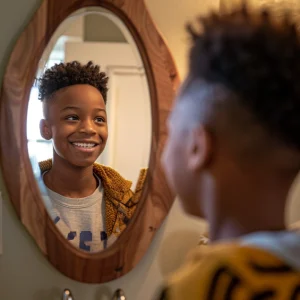 Imagine standing in front of a giant mirror, but instead of showing your reflection, it shows you as different characters: an astronaut, a teacher, a doctor, a chef… With each change, you wonder, “Is this who I’m meant to be?” This mirror is like the world around us, offering endless reflections of who we could be, based on what we do or what others say about us.
Imagine standing in front of a giant mirror, but instead of showing your reflection, it shows you as different characters: an astronaut, a teacher, a doctor, a chef… With each change, you wonder, “Is this who I’m meant to be?” This mirror is like the world around us, offering endless reflections of who we could be, based on what we do or what others say about us.
But then, the mirror changes once more, and this time, it shows something different—not a job, a title, or a role, but you, surrounded by light, with the words “Loved, Chosen, Forgiven, Redeemed” floating around. This is how God sees you.
Let’s explore what these words mean, diving into the Bible to uncover the treasure of our true identity and purpose.
Loved Unconditionally
The Bible tells us in 1 John 3:1, “See what great love the Father has lavished on us, that we should be called children of God! And that is what we are!“
Before you did anything to earn it, God already loved you immensely. You are His child, loved for who you are, not what you do.
“Think about this: even before you were born, before you did your first good deed or made your first mistake, God’s love for you was already overflowing. It’s like when your family loves you just because you’re you, not because you cleaned your room or got good grades. You are incredibly precious to God, simply because you exist. He loves you more than you can imagine, and nothing you do can make Him love you any more or any less. That’s the kind of unconditional love God has for you, His child.”
How does knowing you’re loved by God just because you’re you change how you see yourself?
Chosen for a Reason
In Ephesians 1:4-5, we learn that “He chose us in Him before the creation of the world to be holy and blameless in His sight. In love, He predestined us for adoption to sonship through Jesus Christ, according to His pleasure and will.”
God chose you to be part of His family, with a special role only you can fulfill.
“Did you know that out of all the people in the world, God picked you to be part of His amazing family? It’s true! Just like a coach picks team members for their unique skills, God chose you because He has a special plan that only you can do. Your role in God’s family is like a puzzle piece that fits perfectly. Without you, the picture wouldn’t be complete. This doesn’t mean you have to be perfect; it means that being yourself is exactly what God’s team needs. He’s excited about the part you’ll play in His big story.”
What does it feel like to know you were chosen by God even before the world was made?
Forgiven Completely
Colossians 1:13-14 reveals, “For He has rescued us from the dominion of darkness and brought us into the kingdom of the Son He loves, in whom we have redemption, the forgiveness of sins.“
Our mistakes don’t define us; God’s forgiveness does. He sees us as new creations, free from the past.
“Everyone makes mistakes; it’s part of being human. But here’s some really good news: our mistakes don’t have to stick to us like permanent stickers. Because of Jesus, God offers us forgiveness, which is like a do-over. When we say sorry and accept God’s forgiveness, He doesn’t just wipe our slate clean; He gives us a brand new one. It’s as if we get to start fresh, not as people weighed down by our past, but as new creations who are free to live joyfully and confidently. With God, every day is a new beginning, full of hope and possibilities.”
How does understanding God’s forgiveness help us forgive ourselves and others?
Redeemed and Made New
Finally, 2 Corinthians 5:17 declares, “Therefore, if anyone is in Christ, the new creation has come: The old has gone, the new is here!“
Again, our mistakes don’t define us; God’s forgiveness does. He sees us as new creations, free from the past.
What does being a “new creation” in Christ mean for how we live our lives every day?
Discussion Questions
1. “How does it make you feel to know God loves you all the time?”
Possible Response: “It makes me feel really special. Even if I do something wrong or if my friends are being mean, I know God still loves me.”
2. “How cool is it that God picked you for His team before you were even born?”
Possible Response: “It’s awesome! It makes me feel important and like I have a special mission to find out.”
3. “How does knowing God forgives you help you forgive yourself or others?”
Possible Response: “It helps a lot. If God can forgive me for anything, I can forgive others too. It’s like letting go of a heavy bag I didn’t know I was carrying.”
4. “What does it mean to you to be a new person because of Jesus?”
Possible Response: “It’s like getting a brand new start every day. I can try to be better because I know I’m already made new by Jesus.”
5. “What word would you pick to describe you, knowing God loves and chose you?”
Possible Response: “Loved, because no matter what, I know God will always love me. That’s something I’m always sure about.”
6. “How do you think knowing you’re loved and chosen by God changes the way you decide to act?”
Possible Response: “It means I can choose to be kind and brave because I’m not scared. I want to be like that new kid’s friend because that’s what someone loved by God would do.”
Connecting the Story
Remember, the mirror showing “Loved, Chosen, Forgiven, Redeemed” is the truest reflection of who you are. Your identity isn’t built on shifting sands of opinions or circumstances but on the solid rock of God’s truth about you. Ephesians 2:10 reminds us that “we are God’s creation. He created us to belong to Christ Jesus.”
Now, with hearts full of these truths, let’s step into some activities that will help us bring these concepts to life and discover more about our unique purpose and identity in Christ.

 The first friend, Alex, thought the jungle was scary and full of danger. His map showed him where to go to avoid scary things, but because he was always careful to stay away from danger, he missed seeing some really cool parts of the jungle, like hidden waterfalls and colorful birds.
The first friend, Alex, thought the jungle was scary and full of danger. His map showed him where to go to avoid scary things, but because he was always careful to stay away from danger, he missed seeing some really cool parts of the jungle, like hidden waterfalls and colorful birds. Finally, there was Paityn. Paityn had a special map that her family had given her, filled with wisdom and good advice. It helped her see the jungle as a beautiful, peaceful place. She followed paths that showed her how everything in the jungle worked together. Paityn’s journey was calm and full of purpose, helping her appreciate the beauty of nature and learn important lessons about life.
Finally, there was Paityn. Paityn had a special map that her family had given her, filled with wisdom and good advice. It helped her see the jungle as a beautiful, peaceful place. She followed paths that showed her how everything in the jungle worked together. Paityn’s journey was calm and full of purpose, helping her appreciate the beauty of nature and learn important lessons about life.
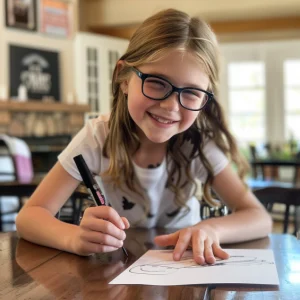 1. If you’re starting with plain paper, have kids trace their footprints and handprints. (It can be done with shoes on or off.) You may need to assist some of the less coordinated.
1. If you’re starting with plain paper, have kids trace their footprints and handprints. (It can be done with shoes on or off.) You may need to assist some of the less coordinated. Objective: Put faith into action by planning and participating in a service project as a family or class.
Objective: Put faith into action by planning and participating in a service project as a family or class. Imagine standing in front of a giant mirror, but instead of showing your reflection, it shows you as different characters: an astronaut, a teacher, a doctor, a chef… With each change, you wonder, “Is this who I’m meant to be?” This mirror is like the world around us, offering endless reflections of who we could be, based on what we do or what others say about us.
Imagine standing in front of a giant mirror, but instead of showing your reflection, it shows you as different characters: an astronaut, a teacher, a doctor, a chef… With each change, you wonder, “Is this who I’m meant to be?” This mirror is like the world around us, offering endless reflections of who we could be, based on what we do or what others say about us. Puzzle Assembly
Puzzle Assembly ⭐
⭐ 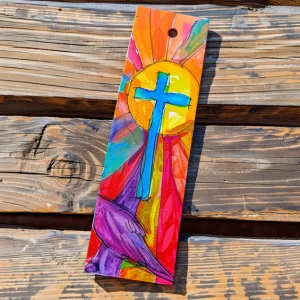 After everyone has completed their bookmarks, it’s important to create a warm and inviting atmosphere for sharing. Arrange the seating in a circle to encourage a sense of community and togetherness. You might even light a candle (safely) in the center to symbolize the light of Christ that shines within each of us.
After everyone has completed their bookmarks, it’s important to create a warm and inviting atmosphere for sharing. Arrange the seating in a circle to encourage a sense of community and togetherness. You might even light a candle (safely) in the center to symbolize the light of Christ that shines within each of us.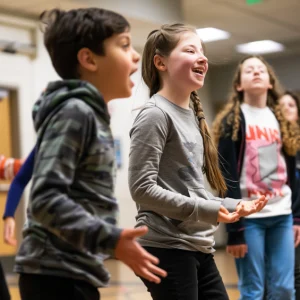 Divide the class into small groups. Have each group draw a Scenario Card at random.
Divide the class into small groups. Have each group draw a Scenario Card at random.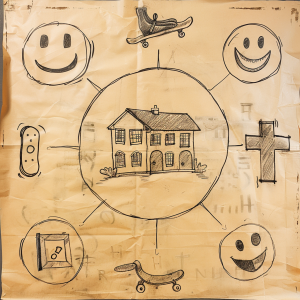 Step 1: Create Your World Map
Step 1: Create Your World Map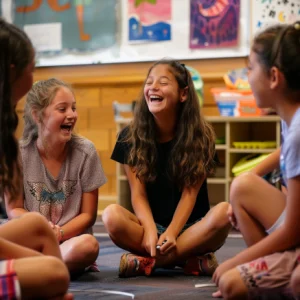 Step 3: Make a Weekly Action Plan
Step 3: Make a Weekly Action Plan Step 2: Light of the World
Step 2: Light of the World